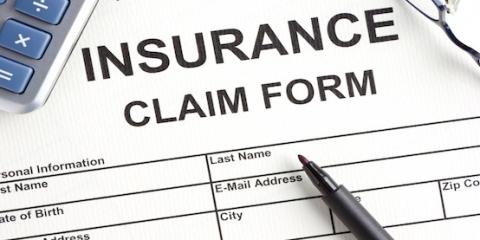
Making an Insurance Claim
By having your household inventory and records, it is easier to make an insurance claim should the need arise. There are six steps in making a claim.
Step 1: Contact Your Agent Immediately
- Give your name, address, policy number, and the date and time of your loss.
- Make sure to tell them where you can be reached, especially if you are unable to stay in your home.
- Follow up the call with a letter detailing the problem. Keep a copy of the letter.
- Your insurance agent will arrange for an adjuster to visit your property and assess the damage. Be sure the adjuster is properly licensed.
Step 2: Carefully Document Your Losses
This step is especially important if you failed to make an accurate inventory beforehand, or if the inventory you made was lost.
Safety First! Before entering a building, check for structural damage. Don’t go in if there is any chance of the building collapsing. Be careful walking around, use a flashlight to light your way. Keep power off until an electrician has inspected your system for safety.
Make a detailed list of lost or damaged property. Videotape or photograph damaged property before beginning any repairs.
Do not throw away damaged property without your adjuster’s approval.
Try to document the value of each object lost. Bills of sale, canceled checks, charge account records, and insurance evaluations are good evidence. If you have no such records, estimate the value, and give purchase place and date of purchase. Include this information with your list.
List cleaning and repair bills, including materials, cost of rental equipment, and depreciation of purchased equipment.
A list of any additional living expenses you incur if your home is so severely damaged that you have to find other accommodations while repairs are being made. This includes motel and restaurant bills, home rental, or car rental.
Step 3: Protect Your Property from Further Damage or Theft
Patch roofs temporarily. Cover broken windows with boards or plastic.
If household furnishings are exposed to weather, move them to a safe location for storage.
Remember the documentation from Step 2! Save receipts for what you spend and submit them to your insurance company for reimbursement.
If your home has been flooded, protect your family’s health by cleaning up your house right away. Floodwaters pick up sewage and chemicals from roads, farms and factories. Throw out foods and medicines that may have come into contact with floodwater. Dry out water-damaged furnishings and clothing as soon as possible to prevent fading and deterioration. You may wish to take some items to a reliable dry cleaner.
Step 4: Working With the Adjuster
Your insurance agent will arrange for an adjuster to visit your property and assess the damage. Be sure that you or a trusted advisor is present when the adjuster visits the site.
Work with the adjuster. It is their job to assist you and review your claim. The adjuster will inspect your list of lost or damaged property. The adjuster will work with you to calculate the value of the items on the list and prepare a repair estimate of damage to the property.
You and the adjuster need to come to an agreement as to the scope of damage, which is an agreement, without a dollar amount, of what needs to be repaired or replaced.
Make sure you know what needs to be done to follow up on this agreement and why. If you do not, ask the adjuster for instructions in writing.
Step 5: Settling Your Claim
You may settle personal property and structural claims at separate times, although your adjuster may suggest that you file the claims together. Filing separately allows you to take the time needed to determine the full extent of your losses.
Don’t be in a hurry to settle your claim. Although you may want to have your damage claim settled as quickly as possible, it is sometimes advisable to wait until all the damage has been discovered. Damages overlooked in an early estimate may become apparent later. If you are dissatisfied with the settlement offer, talk things over with your agent and adjuster.
If you and your adjuster cannot reach a settlement, you may obtain mediation through your state’s Department of Insurance. Mediation is an informal process where a neutral third party tries to help the parties resolve the dispute.
Step 6: Repairing Your Home
You or your insurance company may contract for the repair of your home. See if the contractor holds a proper license by contacting your state department of business and professional regulation.
Contact the reputable licensed and insured firm to have your damage repaired. Beware of door-to-door sellers. Sometimes undependable workers enter a damaged area, make cheap repairs, and leave before the residents discover that the repairs are inadequate. If your local contractor cannot do the work, ask them to recommend someone.
Get a written estimate that includes any oral promises the contractor made. But remember to ask if there’s a charge for an estimate before allowing anyone into your home.
Your insurance company may initially pay you a sum equal to the actual cash value unless you request minimal repairs. The company will withhold the balance of the full replacement cost until after you complete the repairs.
ServiceMaster of Columbia is your Master of Disaster. We work with customers, agents and adjusters to ensure that whatever disaster you are facing is taken care of properly. Our goal is to RESTORE the customer’s peace of mind. We work directly with adjusters and customers and provide excellent transparent communication to all parties.
If you ever experience a disaster ranging from Fire, Mold, Water or Trauma, call ServiceMaster of Columbia 24/7/365, (573) 443-8383. #masterofdisaster



